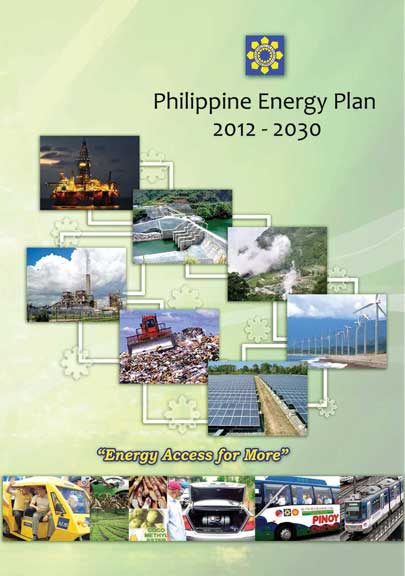Introduction
 As energy is vital to quality human life and the country’s economic growth, the Department of Energy (DOE) initiated the formulation of the 2016-2030 sectoral energy roadmaps that will set out specific actions and directions to drive the sector forward. Development of these roadmaps took into consideration the country’s long-term economic growth forecast, wealth of indigenous and natural resources, energy security and reliability goals, as well as measured respond to impacts of climate change.
As energy is vital to quality human life and the country’s economic growth, the Department of Energy (DOE) initiated the formulation of the 2016-2030 sectoral energy roadmaps that will set out specific actions and directions to drive the sector forward. Development of these roadmaps took into consideration the country’s long-term economic growth forecast, wealth of indigenous and natural resources, energy security and reliability goals, as well as measured respond to impacts of climate change.
These roadmaps cover collective efforts of the energy industry in exploring and harnessing all available energy sources in the country. The critical role of both renewable and conventional energy resources will continue to be reinforced as both resources will help mitigate increases in energy demand. Policies will also be in place to ensure that legitimate public concerns on environmental and social impact in the course of developing these resources are addressed.
Promoting energy access is the sector’s contribution to poverty alleviation and people empowerment. Thus, the Electrification Roadmap will ensure 100 percent household access to electricity services by 2020. This would empower local communities and boost countryside economic activities.
Initiatives on demand-side management and energy efficiency measures are considered prime areas of focus to temper the country’s energy requirements.
Each of the roadmaps is cognizant of the critical need to acquire and sustain substantial investments to ensure that energy projects are actualized in a timely manner.
And to further support the growing industrialization of the Philippines, the Department is in the process of formulating a responsive and dynamic energy mix, as well as establishing the local reserve requirements. Said mix is being developed to be technology neutral and will instead identify power requirement based on plant categorization. Based on the new energy mix policy for power generation, the power plant technologies considered per type of operation are as follows:
- 70 percent baseload capacity from coal, geothermal, big hydropower, natural gas, nuclear and biomass (during availability of feedstocks)
- 20 percent mid-merit capacities from natural gas
- 10 percent of peaking capacities from oil-based plants and variable renewable energy such as solar photovoltaic (during daytime) and wind
Once it is firmed-up, the optimal energy mix policy will provide a clear direction for energy developers/investors to plan ahead with its business plans. Said policy can be best applied to island electrification in their power development planning and will provide energy planners and policy makers the platform for exploring the possibility of going nuclear. Likewise, for the energy sector, this policy is expected to address pressing issues such as the high cost of electricity, sporadic power interruptions, limited and unreliable transmission system, delayed and unpredictable permitting process in the application for power projects, limited power electricity market and electrification gaps in off-grid areas.
Click to view/download PDF file of the 2016-2030 Philippine Energy Plan


